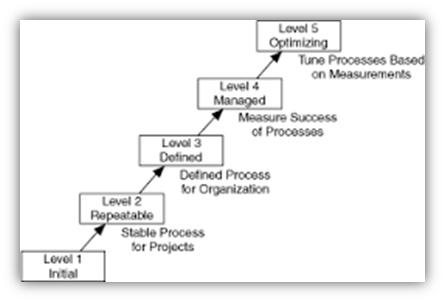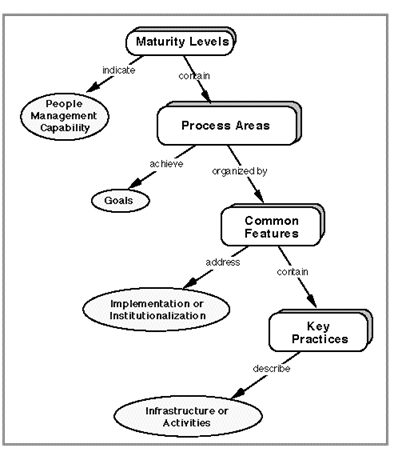Using a data governance maturity model to assess and continually measure the performance of the data governance program can give any organization tactical and strategic benefits.
Introduction
Generally, data governance is a long-term strategic initiative, but data governance can also deliver short-term, tactical benefits. The need for both strategic and tactical approaches to data governance contributes to an organization’s confusion on where to begin. Many organizations have struggled with understanding the need for understanding their data, although data is one of an organization’s critical assets.
There are many definitions of data governance. One that has resonated well with many organizations follows:
Data governance is the practice of organizing and implementing policies, procedures, and standards for the effective use of an organization’s structured / unstructured information assets. Data governance is accomplished through the acts of data stewards, who exercise the careful, responsible management of data, entrusted to them on behalf of others. The data governance framework includes the intersection of and relationship with data quality, meta data management, and master data management for a comprehensive information management strategy administered by data stewards.
(Note: owners and stewards are NOT interchangeable, owners have power and control, and stewards manage on behalf of the owner, perhaps without control over the resource / object).
Many organizations are interested in the concepts of data governance and data stewardship , but when asked if they want to explore how to implement these concepts they need help to see the need for such a strategic initiative. Management can be more concerned with the immediate problems of project delivery and application problem-solving, rather than thinking about how to prevent future problems with data management , data usage, protection and consolidation. This focus on immediate actions also can obscure the need for understanding the value and meaning of the data, making this critical asset less useful than it should be.
This concentration on immediate issues presents a challenge to those who see the benefits of strategic planning and the need for using data governance as a foundation for information management. Well governed data would help deliver better information for improved decision-making and can offer a competitive advantage, as well as satisfying multiple user domains’ requirements for commonly defined and managed data. The problem of persuading an organization to adopt a data governance approach within data management lies in the fact that it is not easy to demonstrate how these benefits can be achieved quickly enough to satisfy those within the organization who need to see results promptly. Balancing the tactical needs with the desire for strategic planning can show an organization that paying attention to data governance can be rewarding in many dimensions and can offer results faster than may be expected.
One process improvement method that can show both immediate and strategic results for an approach is maturity modeling (CMM), which can be tailored for almost any discipline (software process, software integration, project management, data management, governance, etc.).
The Capability Maturity Model (CMM) and its derivatives instantiated the concepts of examining progression toward “maturity” in some discipline. The CMM-oriented models measure how much an organization uses defined processes to manage some activity (once again: software process development, system integration, data management, etc.).
Maturity Model Common Points and Benefits
Maturity modeling is the general technique that the CMM and all related models employ. Some common points in maturity modeling are:
- Different organizations tend to adopt the different parts of a method in a similar progression, leading to the development of a scale that assesses the organization’s current maturity.
- Mapping an organization’s current position on the scale gives an indication of its maturity in the method.
- The maturity level can show an organization the most appropriate next steps, and give an indication of the benefits of improving its maturity.
- Maturity levels are incremental; an organization cannot progress from Level 1 to Level 3 without having satisfied the components of Level 2.
- Maturity can be delineated into key areas, and each organization can be more mature in one or more areas than in others at the same level.
Levels of a Data Governance Maturity Model
The levels of a basic maturity model for data governance might appear as:

Figure 1: CMM Levels
- Non-existent. Organization has no data governance approach and no stewardship functions.
- Ad hoc. Organization performs occasional, non-standardized stewardship activities but has no formal data governance approach.
- Standardized. Organization has implemented some standard data governance practices and has standardized the stewardship role, but has not identified specific stewards in all business areas nor given them formal industry approved training.
- Committed. Organization has instituted data governance in all information areas and has identified and trained stewards for all business units.
- Consolidated. Data governance and data stewardship are coordinated across the enterprise with measurements reported regularly to all stakeholders.
- Strategic. Data governance is used to set, communicate and enforce business and IT information management policy.
Using a maturity model can assist an organization in understanding data governance, and allows any organization to measure its relative maturity in this important area. Having the process, key areas, process indicators, and methods of a complete data governance model can give an organization focus in developing and continually refining their approach to data governance and data stewardship.
Assessment using the data governance maturity model can demonstrate the following effects:
- For organizations that currently do not engage in data governance, systematically developing and implementing data governance based on a maturity model format reduces risk in projects and delivers higher quality information to users. Data governance can be an effective project enhancement effort for improved data and information quality.
- After having reached Level 2 of the data governance maturity scale, data governance can become the basis for proactive management of information in the organization.
- As the organization progresses along the data governance maturity continuum, it can be used to define, communicate, and enforce business-driven information management policy.
Although many organizations struggle with the need for strategic management of information, data governance can be used as a way to address their immediate needs for tactical improvement in data quality and cost reduction. These benefits come as a result of improved data management in an organization, as EWSolutions has discovered through many successful engagements. Data protection, a part of IT governance concerned with the security and privacy of the data stored in information systems is another area of governance that should not be overlooked in developing an enterprise approach to managing data.
Conclusion
Stressing the tactical benefits of data governance does not weaken the strategic view needed for full information management. However, businesses may want to see the benefits of a tactical approach to data governance before they can justify the implementation of a strategic view of data and its governance. Using the data governance maturity model as the benchmark for assessing their current data governance status can give organizations information on what areas should constitute their initial focus for improving data governance practices, whether that focus is tactical or strategic.







